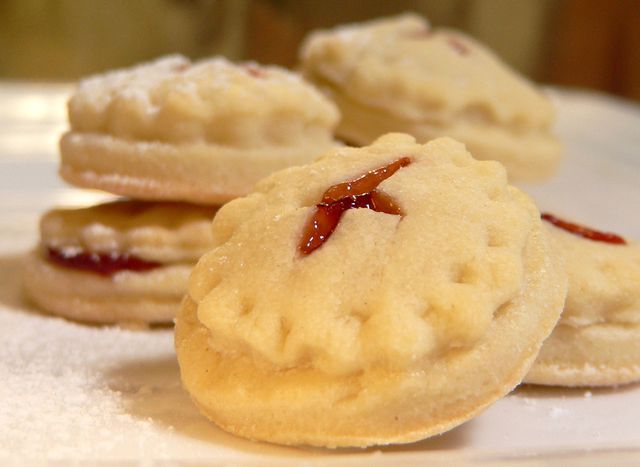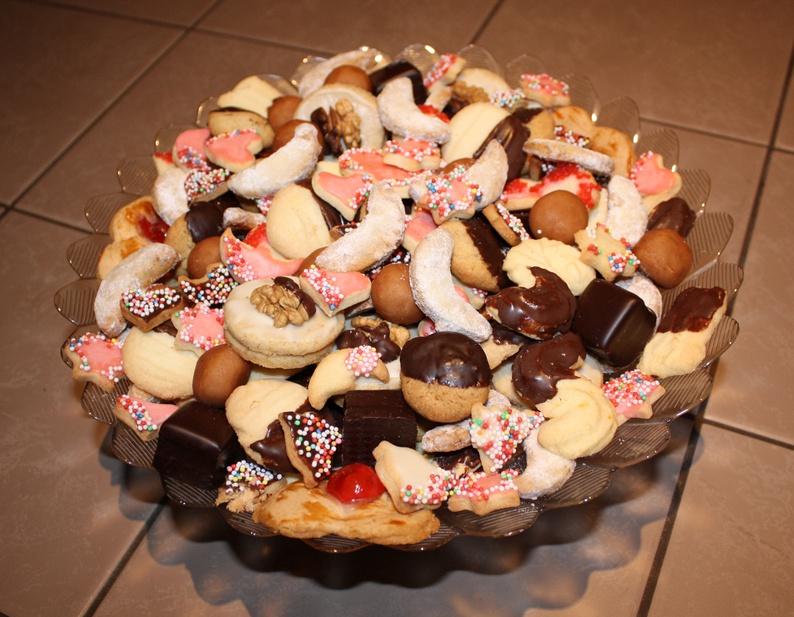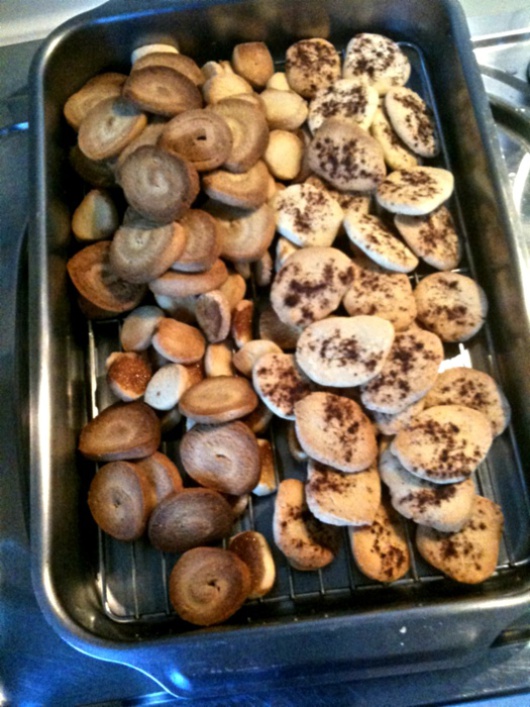
Plätzchen: decoding German Christmas biscuits
Published on
I woke up on 1 December to see the first downy white flakes of snow floating past my window in Göttingen. A few hours, some steaming mulled wine and ten frozen fingers later, and it was time to make the traditional christmas biscuits
Plätzchen, which literally means ‘a little place’ but comes from the word Platz meaning ‘round flat cake’, are a mainstay of advent in Germany. They are the culinary equivalent of the wreath on the table and the kids carolling on the street. Nonetheless, plätzchen (pronounced 'plehtschyun') are not the direct equivalent of their British cousins, mince pies, and the differences are enough to confuse an easily bemused Brit.
Just a biscuit?
My bemusement grows when I ask good old uncle google for a few recipe suggestions. While I had been expecting variations on a theme (like ten different sets of instructions for making grandma’s famous cinnamon spice cookies), I am confronted by a bewildering array of very different recipes, from chocolate crispy cakes to vanilla curls and cinnamon stars. What on earth is meant to bind all these colourful individuals into one family?
 I explain my confusion to a German friend as we sample my first batch of vanilla curls. Hence comes lesson number one. ‘Plätzchen are just biscuits. Kekse, you know?’ she explains gently. I feel sure I am missing something – what’s so christmassy about biscuits? Perhaps it has more to do with my own British heritage than anything else though. For someone who grew up in a land where a rich tea biscuit dunked in earl grey is considered the pinnacle of perfection, the idea of relegating our digestive friends to one month of the year seems bizarre. However, that isn’t to say that there is nothing particular about plätzchen. Classic plätzchen are cut out in different christmassy shapes, transforming the kitchen into a snowscape of reindeer, snowmen and stars.
I explain my confusion to a German friend as we sample my first batch of vanilla curls. Hence comes lesson number one. ‘Plätzchen are just biscuits. Kekse, you know?’ she explains gently. I feel sure I am missing something – what’s so christmassy about biscuits? Perhaps it has more to do with my own British heritage than anything else though. For someone who grew up in a land where a rich tea biscuit dunked in earl grey is considered the pinnacle of perfection, the idea of relegating our digestive friends to one month of the year seems bizarre. However, that isn’t to say that there is nothing particular about plätzchen. Classic plätzchen are cut out in different christmassy shapes, transforming the kitchen into a snowscape of reindeer, snowmen and stars.
The point of plätzchen is the ritual of baking – of gathering with friends
Lesson number two: the proof of the pudding is not in the eating. What I had failed to grasp about plätzchen is that the point here is not the finished product. The point is the process. In contrast to that German establishment, homemade cake, you rarely bake plätzchen alone in preparation for visitors. And you do not, repeat not, buy them from the supermarket. The point of plätzchen is the ritual of baking – of gathering with friends, heating and sharing mulled wine (Glühwein), taking it in turns to stir, knead, roll, taste. As with the biscuits we remember baking in our childhood, it doesn’t matter if some end up wonky, or a bit burnt. You’ll just eat those ones more quickly, to destroy the evidence.
Recipe: Plätzchen

Ingredients:
250g flour
210g butter, softened
80g sugar
2 packets (about 15g) vanilla sugar
100g ground almonds
Vanilla sugar/icing sugar to sprinkle on top
- Invite friends over- Heat up some mulled wine while waiting for them to arrive- Put all the ingredients, other than the vanilla sugar/icing sugar for sprinkling into large mixing bowl and take turns to stir, then knead to a dough - Put the mixture in the fridge for half an hour - Preheat the oven to 175⁰ C
- Form crescents out of the dough
- Bake for twenty minutes, till the biscuits are golden
- Leave to cool for just a couple of minutes before sprinkling with icing sugar
- Curl up with friends and plätzchen on the sofa to watch the German Christmas classic Three Hazelnuts for Cinderella ('Drei Haselnüsse für Aschenbrödel')
Imagess: main (cc) christmas plätzchen (cc) wikimedia; in-text (cc) cranberry plätzchen (cc) Hedonistin on flickr/ official site; freshly baked plätzchen (cc) wkueting/ Wolfgang Küting/ kueting.de/ flickr



